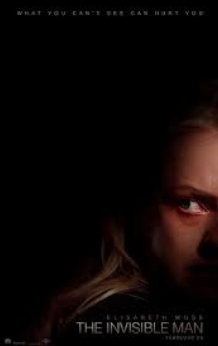DANICA CREAHAN WRITES- In the new Blumhouse horror film “The Invisible Man,” released on February 28, 2020, the Australian-American filmmaker (best known for co-creating Saw and Insidious) Leigh Whannell, proves that in the #MeToo era, men can do right by female characters, and maybe could have been doing better all along.
Joining the list of over 15 loose adaptations of the H.G. Wells novel, first published in 1897, Whannell’s retelling of the story, which he wrote and directed, is drained of the titillation often associated with the invisible man trope. Instead, he highlights a truly invisible narrative– that of a woman’s struggle against her invisible abuser.
In the movie’s tense, painfully quiet opening sequence, we watch the protagonist, Cecilia, played by Elizabeth Moss, enact a careful and deliberate escape plan that wordlessly conveys all that the audience will ever know about her relationship with her abuser: That it was so bad we viewers hold our breath as we watch- and that we will never breathe easily again, throughout the rest of the movie.
In this film, little touches turn what could have been, and previously were, typical horror film touches, such as taking pleasure in the suffering of complacent women, into social commentary with an empowering twist at the end. The film stars a more realistic female character than what one typically sees in a horror flick: One who isn’t scantily clad, isn’t a fool who runs alone into the woods (without good reason) and doesn’t have a doe-eyed look of fear on her face There’s no innocence behind his Cecilia’s eyes. Such a well-crafted, 3-dimensional female character is a rarity in the horror and sci-fi genre. And to think that she was crafted by a male film-maker! A pleasant surprise.
Whannell points out that art in effect imitates life; his success in creating a realistic portrait of a female victim is due to the fact that in creating the story in his real life, he listened to women. In addition, his biggest source of guidance came from the film’s lead actress, Elizabeth Moss. Whannell told Vulture, “I’m writing a movie about this experience that I have nothing to do with, and there’s a certain impostor syndrome that can set in. You start to doubt yourself. She [Moss] would really go through the scenes with me with a razor and just bring her insight to it. As soon as I got her stamp of approval, I could feel comfortable moving forward. In that regard, she was almost like a co-writer in her policing of every emotional beat.”
Whannell said that his first instinct with the film was to retell it from the perspective of a victim, as a story about gaslighting and toxic male power. That message is indeed conveyed the first time the invisible man, sight unseen, invades Cecilia’s space. She steps away from cooking for a moment, and, quite literally, he turns up the gas on the stove. Through terrifying and meaningful moments like this, Whannell harnesses the raw horror that can lie behind a victim’s experience.
“I saw an opportunity to reframe it [The original story] in a way that could be scary.” Whannell told the LA times. “We didn’t want to rely on the histrionics of horror, we wanted it to be real. The scarier monster is the one you can imagine in your own life. It’s not a fanged beast, it’s the guy next door.”

